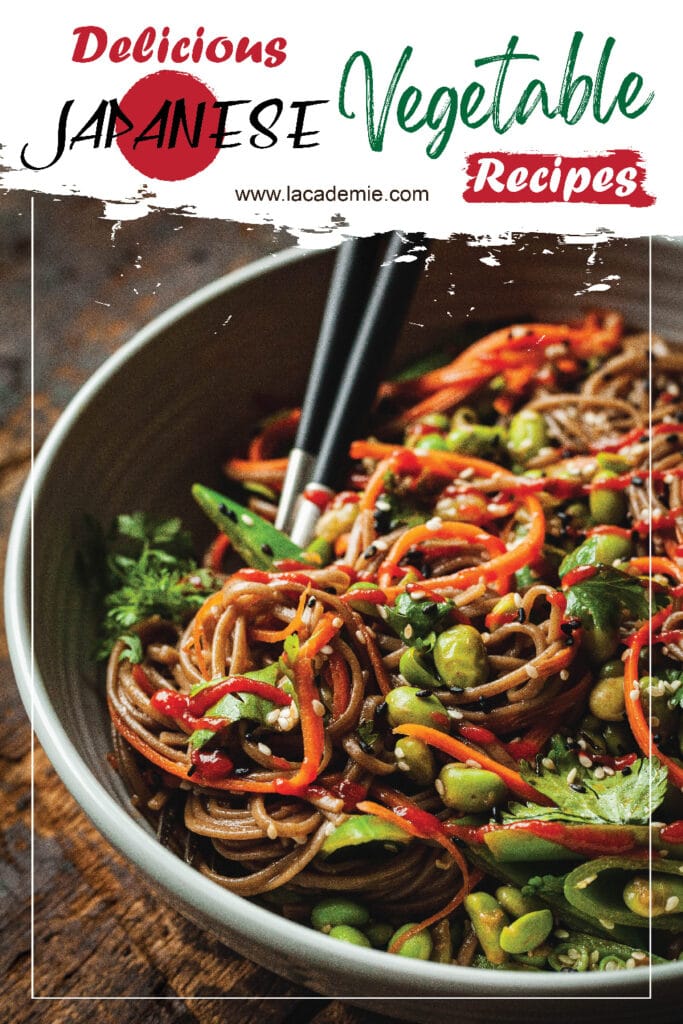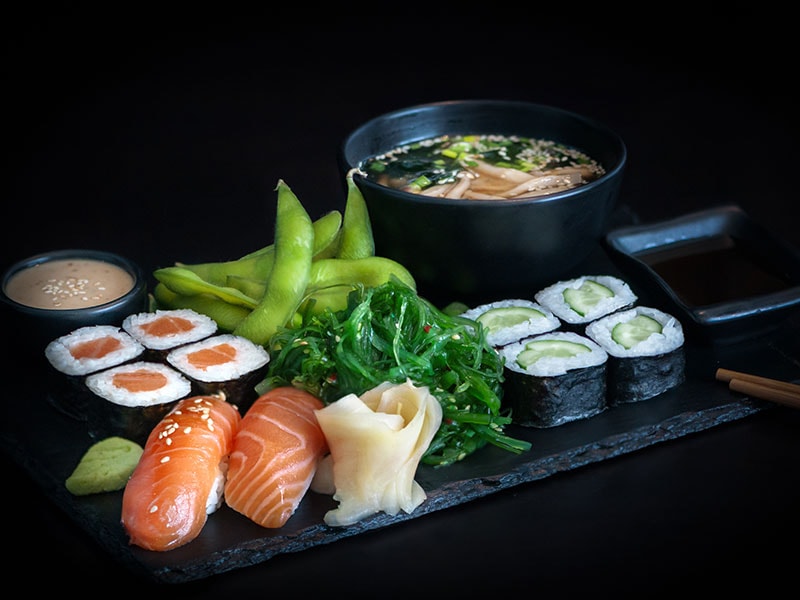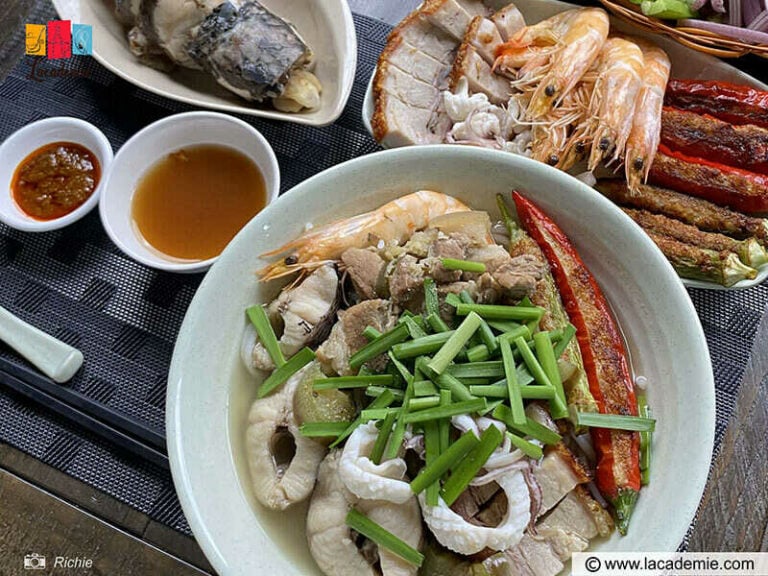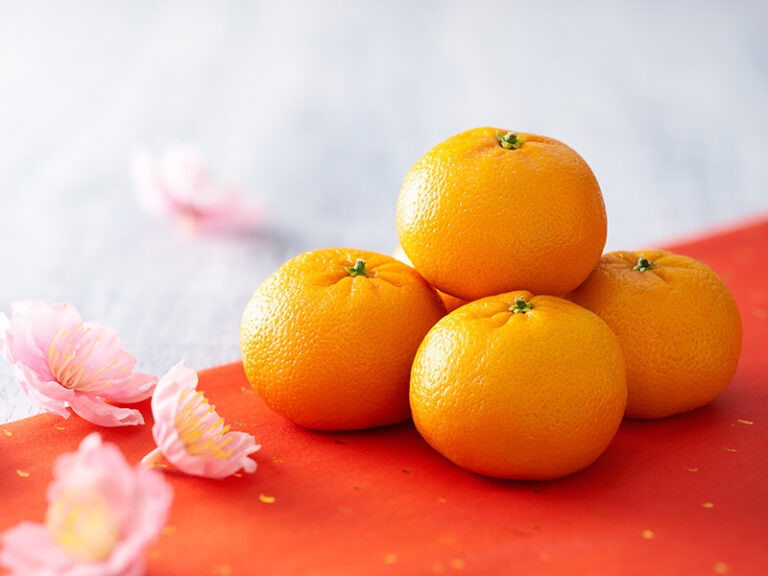If you are looking for Japanese vegetable recipes to make for your next meal, you have come to the right place. Apparently, Japanese culinary ideas are very healthy and diverse, like those that are made with vegetables.
And did you know that there are various ideas for it, for example, salad, soup, hot pot or vegetable steamed rice?
In this article here, I will introduce you to a list of Japanese vegetable recipes you can start making from your next meal or whenever you are craving vegetable dishes. You will never get bored of them!

List of 17 Delicious Japanese Vegetable Recipes
Here is a list of all the Japanese vegetable recipes I will be explaining to you in this article.
1. Sunomono – Japanese Cucumber Salad
2. Nishime – Japanese Vegetable Stew
3. Nasu Dengaku – Miso Glazed Eggplants
4. Wafu Dressing Salad
5. Takikomi Gohan – Japanese Mixed Rice
6. Okra Salad
7. Vegetable Tempura
8. Miso Soup With Summer Vegetables
9. Kenchinjiru – Japanese Vegetable Soup
10. Glazed Kabocha Squash
11. Sukiyaki
12. Shabu-Shabu
13. Vegetable Sushi Roll
14. Kinpira Gobo – Japanese Stir-Fried Burdock And Carrot
15. Edamame Furikake
16. Japanese Kani Salad
17. Japanese Potato Salad
17 Healthy And Tasty Japanese Vegetable Recipes
Now that you’ve glanced through the names of the dishes, let’s get into more details on how each dish looks and their recipe!
1. Sunomono – Japanese Cucumber Salad
This dish is one of the most popular Japanese appetizers or side dishes. Sunomono refers to any dishes that are mixed with vinegar, and so is this light and refreshing cucumber salad. If you are busy but want to have a simple healthy vegetable dish to eat, you should definitely try this!
The recipe is simple, and the main ingredients that enhance the cucumbers are soy sauce, vinegar, and mirin which is sweetened rice wine. The overall taste of this dish can be described as the freshness of cucumber mixed with savory and sourness.
2. Nishime – Japanese Vegetable Stew
For this dish, you can combine many of your favorite root vegetables with gentle yet flavorful Japanese condiments. You can find it in many bento boxes sold in Japan because it tastes good even at room temperature.
What makes the flavor so great for this dish is the mixture of dashi, soy sauce, and mirin. By mixing these three ingredients, you get a mildly sweet and umami taste that blends very well together.
3. Nasu Dengaku – Miso Glazed Eggplants
This Nasu Dengaku is just purely amazing! The umami taste of miso enhanced with condiments like dashi and mirin is mixed with the authentic taste of grilled eggplants.
Even though it is a savory dish, it is not too salty so you can enjoy the dish with or without rice, and either choice is still good. Appetizer, side dish, or even main dish if you are looking for a light meal, this dish is very delicious either way you choose to eat it.
4. Wafu Dressing Salad
What is special about this salad is its dressing! But first, for the vegetables, you can prepare all the basic vegetables that are commonly eaten in a salad like lettuce, tomatoes, cucumbers, and thinly cut or shredded carrots.
Now, talking about the Wafu dressing, it is flavorful since there is sesame oil, rice vinegar, soy sauce, and a few more ingredients all combined together. Such a refreshing, healthy, and tasty dish to have in any meal!
5. Takikomi Gohan – Japanese Mixed Rice
Great for vegetarians, but in general for everyone! This mixed rice is super fulfilling, and since you don’t need to use oil to stir fry the vegetables but still get an amazing taste, it is healthy, too.
Before cooking the rice, you just need to add vegetables like mushrooms, thinly sliced carrots, bamboo shoots, hijiki seaweeds, a few more ingredients, necessary condiments, and you get a warm bowl of savory rice dish.
The flavor of this rice is usually very mild so that you can eat this with the main course. However, if you want a light and vegetarian meal, you can also eat this with miso soup and tsukemono only.
I highly recommend you to try making this versatile mixed rice at home!
6. Okra Salad
Another light and refreshing Japanese salad that is simple to make! Topping with katsuobushi, Japanese fish flakes, does enhance the taste, but if you are vegetarian, you can still enjoy the dish without the fish flakes.
This is also versatile in the way that you can eat the dish as an appetizer or as a side dish with other meals. It will be great when you eat it with foods that are heavily flavored since it will tame the flavor down and give you a change of taste. Okra salad can help you boost your appetite during a meal.
7. Vegetable Tempura
Vegetable tempura is nothing less delicious than prawn tempura. The best thing about this dish is that you can enjoy the crispness of the fried batter with a variety of tastes from different vegetables. Squash and sweet potato tempura are personally my favorites since they are naturally sweet yet fit so well with the tempura dip.
You don’t have to go to a restaurant to eat tempura but can totally make this mouthwatering dish at home!
8. Miso Soup With Summer Vegetables
Warm soup is a traditional side dish of many Japanese meals. It is not always for winter but can also be enjoyed in the summertime too. With this simple ingredient using vegetables like tomatoes, eggplants, and cucumber, this miso soup is warm, light, and refreshing. Very heart-warming!
There are two types of miso paste, white and red. Red miso paste is usually a bit saltier and richer in taste, whereas white miso is for those that love a milder taste of the soup. Both miso pastes go well with this soup, so you can choose the one you like.
9. Kenchinjiru – Japanese Vegetable Soup
Not many other soups are sold in Japanese restaurants around the world, but there is a lot more to discover. If you think miso soup is the only good soup from Japan, then you should try this soup!
There is no miso paste inside, but instead, the broth is cooked from dashi stock, soy sauce, and the sweetness of vegetables and tofu. On a day when you are looking for a simple meal that can save your time, you can just cook this with a warm bowl of rice topped with Japanese pickles, and your meal is ready to be enjoyed.
10. Glazed Kabocha Squash
As for this dish, the natural sweetness of Kabocha and the sweet plus savory taste of all the condiments are so wholesome. Another good thing about it is the ingredients are so simple it is good for a busy day, too.
All you need are kabocha squash, soy sauce, sugar, ginger, sesame seeds, water, and just a few more minor ingredients. So if you want a quick, nice, and healthy meal, you should go for this.
11. Sukiyaki – Japanese Hot Pot
Don’t worry if this hot pot seems complicated and impossible to make at home because you definitely can!
Firstly, you need a hot pot pan or a large soup pan. Then you need to get all the ingredients and condiments needed for the hot pot, which are beef, some delicious Japanese mushroom cultivars (enoki and shiitake), cabbages, tofu, egg, soy sauce, dashi, mirin, and a few more.
The broth is sweet, savory, and packed with natural sweetness from the beef and vegetables. It is best eaten on one of those cold nights to warm your body up, but it can be enjoyed at any time. If you have never tried Sukiyaki, it is worth a try. Very delicious and heart-warming!
12. Shabu-Shabu
This is also another body-warming hot pot that contains so many nutritious ingredients inside. It is quite similar to Sukiyaki, but instead of the sweet and savory broth, all the ingredients are just tossed in boiling water.
Steamed meat and vegetables are then dipped in two kinds of sauces. One is sesame sauce, and the other is Ponzu so that you can dip back and forth in your preferred sauce. Shabu-shabu and Sukiyaki are the two must-try Japanese hot pots!
13. Vegetable Sushi Roll
Vegetable sushi can be eaten as a proper meal or even snacks, and what’s better for a snack than a healthy vegetable sushi roll? In fact, there are dissimilarities between sushi rolls and hand rolls, but both of them are totally fine to mix with veggies.
You can see avocado rolls or cucumber rolls in supermarkets or in Sushi restaurants, but if you make rolls at home, you can add different kinds of vegetable fillings to your sushi like carrots and spinach!
14. Kinpira Gobo – Japanese Stir-Fried Burdock And Carrot
This is another sweet and savory dish due to the mixture of condiments like salty soy sauce, umami flavored dashi, and sweet mirin. All the ingredients like carrots, burdocks, sesame seeds, and a few more mixed with the condiments above blend very well together.
Another dish that is similar to this is lotus roots and carrot. You can substitute burdocks for lotus roots, and they still taste awesome.
Even though it is a stir-fried dish, it is not heavy and oily at all, but on the contrary, it is light, tasty, and healthy!
15. Edamame Furikake
Furikake is savory toppings that help to boost the taste of rice and make it easier to eat, especially when there are not a lot of savory dishes.
Edamame furikake not only boosts the taste of rice but also contains protein and other nutritious factors that are good for your health. Tasty and healthy all in this one-topping dish!
16. Japanese Kani Salad
The amazing thing about Japanese Kani salad is that it is creamy but not heavy but rather light in texture. Kani salad literally means crab salad but the “crab meat” here is imitation crab meat which usually comes in sticks that are the size of a chocolate bar.
As I mentioned above, it is creamy and light, so besides the creaminess, you can feel the authentic taste of cucumbers, shallots, imitation crab, and more ingredients depending on the additional ingredients you want to put in.
17. Japanese Potato Salad
Another creamy salad dish, creamy, light, and refreshing! You can find this salad very popular in Japanese bento boxes and even as a side dish for many main dishes. Depending on if you are vegetarian or not, adding bacon to the salad increases its tastiness.
Since the salad itself doesn’t have an excessively distinctive flavor but is rather mild, it can go well with meat, fish, or even other vegetable dishes. It somehow reminds you of normal mash potatoes but is much lighter in texture and richer in flavor.
You can also serve other items to enjoy with your potato salad. I normally eat it with my chicken or pork meals. All flavors in these dishes mix to mesmerize your taste bud.
Were You Able To Find Your Favorite Recipe?
Japanese vegetable dishes are healthy but may sometimes look complicated when eaten in a restaurant. Especially big dishes like hot-pot need more ingredients, and you may think it is impossible to make those at home.
However, with the right recipe and instructions, you will know that the cooking procedure is not as hard as it seems. Most of the ingredients used for the dishes above can be easily found in nearby supermarkets or Asian markets. Making Sukiyaki or Shabu-shabu at home will keep you away from having to walk or drive to Japanese restaurants whenever you are craving hot pots.
Have you tried making any of the dishes above? What are your favorite Japanese vegetable recipes? Do you prefer eating these kinds of simple Japanese dishes at home, or do you prefer to dine out more? Feel free to share with me your thoughts!
Nutrition Facts
4 servings per container
- Amount Per ServingCalories46
- % Daily Value *
- Total Fat
0.4g
0%
- Sodium 619mg 26%
- Potassium 2mg 1%
- Total Carbohydrate
8.2g
3%
- Dietary Fiber 1g 4%
- Sugars 6g
- Protein 0.2g 0%
- Calcium 10%
* The % Daily Value tells you how much a nutrient in a serving of food contributes to a daily diet. 2,000 calories a day is used for general nutrition advice.








